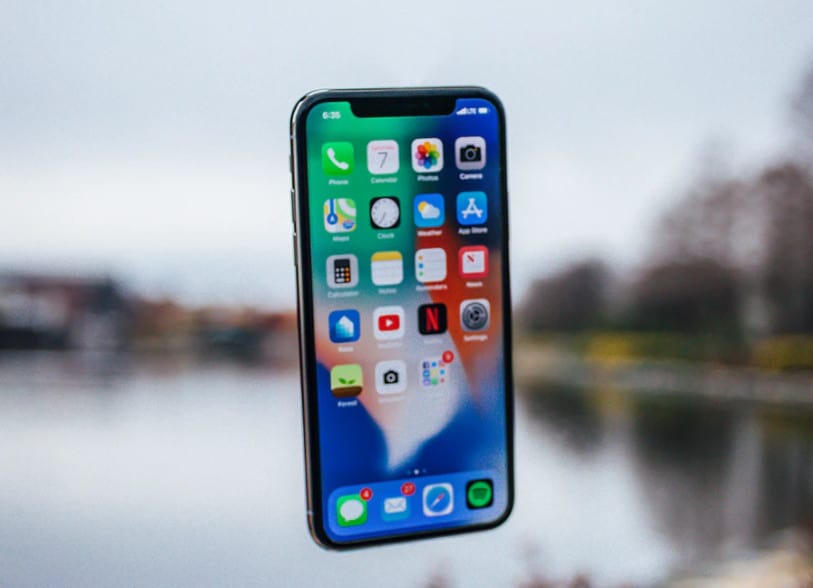In this post, we shall be discussing the iPhone X gestures, what they are, the basic gestures, and how you can make use of them.
Apple introduced the iPhone X on the 3rd of November, 2017. It was Apple’s ONLY flagship device for the year and it retailed for $1000. It also had one MAJOR difference to all other iPhones that came before it – the absence of the usual iPhone central home button.
With this change, it was clear that the new iPhone was going to be operated differently. In the same vein, the phone came with new gestures that Apple described as “intuitive.” These new gestures ushered in new patterns of operating the iPhone though the old gestures were still present.
What Are iPhone Gestures?
A gesture means moving parts of the body (mostly the hands) to make an expression or emphasize something. Likewise, iPhone gestures are used for communication between the user and the iPhone OS. The basic iPhone gestures include tap, double-tap, flick, drag, swipe, pinch, rotate, and shake. They can also be combined.
Swipe-based typing has been a thing on Android for years; popular apps like SWYPE, now defunct, and other third-party apps brought this type of functionality to Android ages ago.

The iPhone intuitive gestures are new gestures for navigating through the iPhone X and newer iPhone versions. You can use these gestures for many tasks on your iPhone, such as changing settings, accessing apps, multitasking, etc. Besides, these intuitive gestures were introduced later on iOS 13.
The Basic iPhone Gestures
Listed below are the basic iPhone gestures you should know:
- Tap – To tap, you just gently touch your iPhone screen. iPhone users mostly apply this gesture used to open apps and select items/options.
- Double-Tap – To double-tap, you gently touch your iPhone screen twice in quick succession. It is equivalent to double-clicking a mouse on your computer. Likewise, double-tap on iPhone X is mainly used for highlighting and zooming images and videos.
- Long Press – To long press, you touch your screen without removing your fingers for a few seconds. This iPhone X gesture allows you to access application options from the home page; it also works for 3D touches.
- Swipe – Swiping involves sweeping your fingers across your phone screen. You can swipe down, swipe up, swipe left, or swipe right. Swiping can be used for navigation and accessing specific options.
- Pinch – To pinch, you should use two fingers to draw closer or farther on your phone screen. This gesture implies either pinching in or pinching out, and it is mainly used for zooming in and out.
Essential iPhone X Gestures And How To Use Them
Listed below are essential iPhone X gestures, their functions, and how to use them.
- Return Home: iPhone X has no home button, so to return home, you have to swipe up from the bottom of the screen.
- Switching apps: No home button on iPhone X implies that you cannot double-tap to access the app switcher. You can switch apps on the iPhone X by swiping up and holding your fingers on the screen. If you already launched an app, you can switch to another by swiping right from the bottom of the screen.
- Access the Control Center: To access the control center, you should place your hands at the top-right corner of your screen and swipe down. This is contrary to swiping up from the bottom of previous iPhone models.
- Access Notifications: To access notifications on iPhone X, you should place your hands at the top-left corner of your screen and swipe down. This is contrary to swiping down from the top of previous iPhone models.
- Access Siri: Holding down the side button on your iPhone X device is the gesture you need to access Siri – Apple’s Virtual Assistant. You can as well say, “Hey, Siri.” In previous iOS models, you will need to hold down the home button.
- Access Apple Pay: To access Apple Pay for payment approvals and app installations, you should double-tap the side button on your iPhone X. On previous models, you will need to either use your passcode or Touch ID.
- Unlocking: The iPhone X uses Face ID, so all you need to do is glance at the screen. Afterward, swipe up from the bottom to unlock.
- Taking Screenshots: To take screenshots on iPhone X, you should hold down and release the ‘volume up button’ and the side button simultaneously, just like on Android devices. Previous iPhone models would require holding down and releasing the home button and the side button simultaneously.
Conclusion
The iPhone X was the first iPhone to use these kinds of gestures. With the exception of the iPhone SE (2020) and the rumored iPhone SE Plus, all future iPhone releases will feature this kind of gesture-based UX – and that includes the iPhone 12 range and beyond.
If you do want an iPhone with a home button, you do have the option of the iPhone SE (2020). Going with the iPhone SE (2020) will also save you A LOT of money, as well as netting your plenty of performance (the iPhone SE 2020 runs the same chipset as the iPhone 11 Pro Max).
And you can grab one for just $399.99 in the USA and £419.99 in the UK.
From Our Sponsors
Looking For A Truly Unique iPhone Case With Advanced Protection? Check Out Casetify’s New 2020 Collection…

